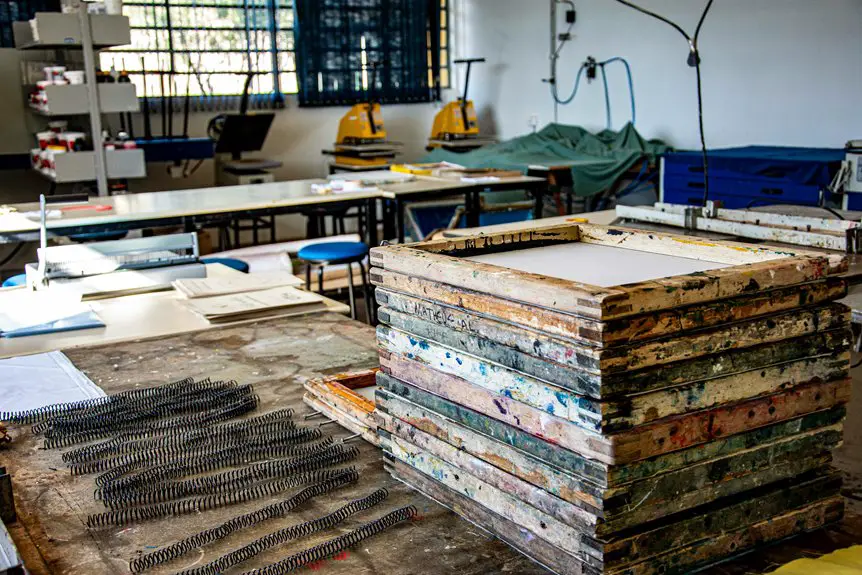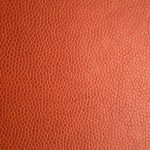You can dye fabric naturally with mulberries by first gathering ripe berries, then crushing and simmering them to extract vibrant purple dye. Choose light, natural fabrics like cotton or silk and pre-wash them to prepare for color absorption. After soaking your fabric in the mulberry dye, fix the color using a mordant like alum for lasting results. Finally, wash gently and air dry. Try this hands-on approach, and you’ll discover creative ways to use and style your naturally dyed fabrics.
Table of Contents
Key Takeaways
- Harvest ripe, deep purple mulberries, rinse gently, and remove stems for pure dye extraction.
- Crush mulberries and simmer in water for 30-45 minutes to extract vibrant natural dye.
- Pre-wash and scour 100% natural fabrics like cotton or silk for better dye absorption.
- Strain dye, soak fabric in the mulberry dye bath, then mordant with alum or iron water for colorfastness.
- Wash dyed fabric gently in cold water with mild detergent and air dry away from direct sunlight.
Understanding the Benefits of Natural Dyeing
Although synthetic dyes are widely available, natural dyeing offers unique benefits that make it worth trying. When you use natural dyes like mulberries, you’re choosing an eco-friendly option that reduces harmful chemical exposure.
Natural dyes like mulberries offer vibrant, eco-friendly colors while reducing exposure to harmful chemicals.
You’ll appreciate how the colors you create are vibrant yet subtle, giving your fabric a beautiful, organic look. Natural dyeing also connects you to traditional crafts, allowing you to engage creatively with nature’s resources.
Plus, the process can be relaxing and rewarding, as you watch the fabric transform with each step. By dyeing naturally, you avoid synthetic toxins, promote sustainability, and create one-of-a-kind pieces that reflect your care and effort.
You’ll enjoy the authentic, earthy tones only natural dyes can provide, making your projects truly special.
Materials Needed for Mulberry Fabric Dyeing
Gathering the right materials sets the foundation for successful mulberry fabric dyeing. You’ll need fresh or dried mulberries, which provide the natural pigment for your fabric.
Choose light-colored natural fabrics like cotton, linen, or silk, as they absorb the dye better. Have a large pot or stainless steel container ready for simmering the berries and fabric.
You’ll also want gloves to protect your hands from staining and a wooden spoon or utensil to stir the dye bath gently. Don’t forget a strainer or cheesecloth to separate the mulberry pulp from the liquid dye.
Finally, prepare some mild detergent for rinsing and a workspace where spills won’t be an issue. Having these materials on hand will streamline your dyeing process.
Preparing the Fabric for Dyeing
You’ll want to start by choosing natural fabrics like cotton or silk, as they absorb mulberry dye best.
Before dyeing, make sure to pre-wash your fabric to remove any dirt or finishes that could block the color.
Scouring the fabric thoroughly helps the dye bond evenly, so don’t skip this important step.
Choosing the Right Fabric
When selecting fabric for dyeing with mulberries, natural fibers like cotton, linen, silk, and wool work best because they absorb the dye more effectively.
Synthetic fabrics such as polyester or nylon don’t take natural dyes well and often result in uneven or faded colors.
You’ll want to take into account the following when choosing your fabric:
- Fiber content: Opt for 100% natural fibers for vibrant, lasting color.
- Weave and texture: Looser weaves and softer textures absorb dye more evenly.
- Fabric weight: Lightweight fabrics tend to show dye colors brighter and more vividly.
Pre-Washing and Scouring
After selecting the perfect natural fabric, the next step is to prepare it properly to make certain the dye adheres well.
Start by pre-washing your fabric in warm water with a mild detergent to remove any dirt, oils, or sizing that could interfere with the dye. Rinse thoroughly until the water runs clear.
Next, scouring is essential to open the fibers for better dye absorption. You can scour your fabric by simmering it gently in a solution of water and soda ash (sodium carbonate) for about an hour. Make sure to stir occasionally and avoid boiling.
After scouring, rinse the fabric well and let it dry. Proper pre-washing and scouring make certain your mulberry dye will penetrate evenly and last longer on your fabric.
Harvesting and Preparing Mulberries
Although mulberries can be harvested at different stages, picking them when they’re fully ripe guarantees the richest dye color. You’ll want to look for deep purple or black berries that easily detach from the stem. Avoid unripe or overly mushy ones, as they won’t provide consistent results.
Before using the berries, follow these tips to prepare them properly:
- Gently rinse the mulberries to remove dirt and insects without crushing them
- Remove stems and leaves, as they can affect the dye’s purity
- Pat the berries dry with a clean cloth to prevent dilution of your dye bath
Taking these steps makes certain your mulberries are clean and ready, setting a strong foundation for vibrant, natural fabric dyeing.
Extracting Dye From Mulberries
Now that you’ve gathered your mulberries, it’s time to prepare them for dye extraction.
You’ll want to crush the berries to release their rich color, then use heat or soaking methods to pull out the dye.
These simple techniques will help you get the most vibrant hues from your mulberries.
Preparing Mulberries for Dye
When you start preparing mulberries for dye, you’ll want to gather ripe, fresh berries to guarantee vibrant color extraction.
First, rinse the berries gently to remove dirt and debris without crushing them. Then, remove any stems or leaves that might affect the dye’s purity. Finally, crush the berries slightly to release their juices but avoid turning them into a pulp.
Keep in mind these key steps:
- Use only fully ripe mulberries for the richest pigment.
- Handle berries carefully to prevent premature juice loss.
- Prepare your workspace with containers to catch the dye liquid efficiently.
Techniques for Color Extraction
Since mulberries contain delicate pigments, you’ll want to extract their dye carefully to maintain vibrant colors.
Begin by crushing the berries gently to release their juice without breaking seeds, which can add unwanted bitterness. Next, simmer the crushed mulberries in water on low heat for 30-45 minutes, stirring occasionally to help release the color.
Avoid boiling vigorously, as high heat can dull the pigment. Once the liquid turns rich and deep, strain out solids using a fine mesh or cheesecloth.
For a stronger dye, you can repeat this simmering process with the strained juice, concentrating the color. Finally, cool the dye before using it on fabric to guarantee even absorption and the best possible natural hue.
Setting Up the Dye Bath
To set up the dye bath, start by filling a large pot with enough water to fully submerge your fabric. Use clean, filtered water if possible to avoid impurities that might affect the color.
Heat the water gently—mulberry dye works best around 140°F (60°C), not boiling. Before adding your fabric, confirm the mulberry extract or crushed berries are well mixed in the water to create an even dye solution.
Remember these key points:
- Use a pot made of non-reactive material like stainless steel or enamel.
- Stir the dye bath occasionally to distribute color evenly.
- Avoid overcrowding the pot; fabric should move freely for uniform dyeing.
Setting the dye bath correctly is essential for vibrant, consistent results.
Dyeing Your Fabric With Mulberry Extract
Immerse your fabric gently into the mulberry dye bath, ensuring it’s fully submerged for even color absorption.
Stir the fabric occasionally with a wooden spoon to prevent uneven patches or spots. Keep the fabric in the bath for about 30 to 60 minutes, depending on the richness of color you want. Remember, the longer you leave it, the deeper the hue becomes.
After dyeing, carefully lift the fabric out and let excess dye drip back into the pot. Rinse the fabric in cold water until the water runs clear to remove any loose dye.
Avoid wringing it out; instead, press gently to remove water. Lay your fabric flat or hang it to dry away from direct sunlight to preserve the vibrant mulberry color.
Fixing the Color for Long-Lasting Results
Although the mulberry dye gives your fabric a beautiful color, you’ll need to fix the color to guarantee it lasts through washes and wear.
Mulberry dye imparts rich color, but fixing it ensures lasting vibrancy through washes and wear.
Fixing, or mordanting, helps bind the dye to the fibers, preventing fading and bleeding. After dyeing, soak your fabric in a mordant solution.
Common natural mordants include:
- Alum (potassium aluminum sulfate) for bright, lasting colors
- Cream of tartar to enhance color brightness and softness
- Iron water (ferrous sulfate) for darkening and adding depth
Make sure to fully submerge your fabric and let it soak for at least 30 minutes.
Rinse lightly afterward to remove excess mordant, then air dry away from direct sunlight. This step is essential to maintain the vivid mulberry hues on your fabric for the long haul.
Washing and Drying Dyed Fabric
Once you’ve fixed the color, you should handle washing and drying with care to preserve the vibrant mulberry dye.
Wash your fabric separately in cold water to prevent color bleeding. Use a mild detergent designed for delicate fabrics, avoiding bleach or harsh chemicals that can fade the dye.
Gently hand wash or use a delicate cycle if you opt for machine washing. After washing, avoid wringing the fabric, which can distort its shape. Instead, press out excess water by rolling the fabric in a clean towel.
Air dry your fabric flat or hang it away from direct sunlight, which can dull the color over time. Following these steps helps maintain the rich, natural hues of your mulberry-dyed fabric for longer-lasting beauty.
Creative Ideas for Using Mulberry-Dyed Fabrics
Now that your fabric is beautifully dyed with mulberries, think about all the creative projects you can start.
You’ll find styling tips to help you make the most of those unique colors in clothing or home decor.
Let’s explore some fun ideas to bring your mulberry-dyed fabric to life.
Mulberry Fabric Project Ideas
Mulberry-dyed fabrics offer a unique blend of rich color and natural charm that can elevate any project you choose.
Once you’ve dyed your fabric, consider turning it into eye-catching pieces that showcase the deep purples and reds mulberries create. You can craft:
- Throw pillows that add a cozy, artistic touch to your living room.
- Scarves or headbands that bring a pop of natural color to your outfit.
- Tote bags with a bespoke, eco-friendly vibe perfect for everyday use.
These projects are simple enough for beginners but impressive enough to gift.
By using mulberry-dyed fabric, you not only create something beautiful but also connect with nature’s palette in a meaningful way.
Give your creativity room to flourish with these versatile ideas!
Styling Tips for Mulberry-Dyed
When you incorporate fabrics dyed with mulberries into your wardrobe or décor, you tap into a rich palette of deep purples and reds that can transform ordinary items into standout pieces. You can pair mulberry hues with neutral tones like beige or gray to balance intensity or with gold accents for a luxurious touch. For home décor, try mulberry-dyed cushions or curtains to add warmth and vibrancy.
| Use Case | Styling Tip | Effect |
|---|---|---|
| Clothing | Pair with denim or white | Casual yet striking |
| Accessories | Add gold jewelry | Elegant and eye-catching |
| Home Décor | Combine with earth tones | Cozy and inviting atmosphere |
Frequently Asked Questions
Can Other Fruits Be Used for Similar Natural Dyeing Effects?
You can definitely use other fruits like blueberries, blackberries, or pomegranates for natural dyeing. They all release vibrant colors, so you’ll enjoy experimenting with different shades and textures on your fabric.
How Does Mulberry Dyeing Affect Fabric Texture?
Did you know mulberry dyeing can increase fabric softness by up to 15%? When you dye with mulberries, you’ll notice your fabric becomes smoother and more pliable, enhancing both texture and comfort naturally.
Are There Safety Concerns When Handling Mulberry Dye?
You shouldn’t worry too much, but you’ll want to wear gloves since mulberry dye can stain your skin. Also, work in a well-ventilated space to avoid inhaling any particles, and keep dye away from eyes.
Can Mulberry Dye Be Mixed With Other Natural Dyes?
You can mix mulberry dye with other natural dyes to create unique colors. Just test combinations on a small fabric piece first, since different dyes may react differently and affect the final shade or fabric texture.
What Is the Historical Significance of Mulberry Dyeing?
You’ll find mulberry dyeing has deep roots in ancient cultures, especially in Asia, where it symbolized status and artistry. It’s been used for centuries to create vibrant, lasting colors in textiles, reflecting tradition and craftsmanship.
- Where to Buy Sherpa Suede Fabric - July 12, 2025
- How to Draw or Illustrate the Texture of Suede Fabric - July 12, 2025
- What Is Baseball Suede Leather Fabric? - July 12, 2025







